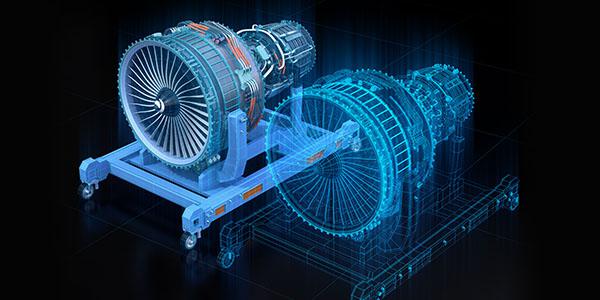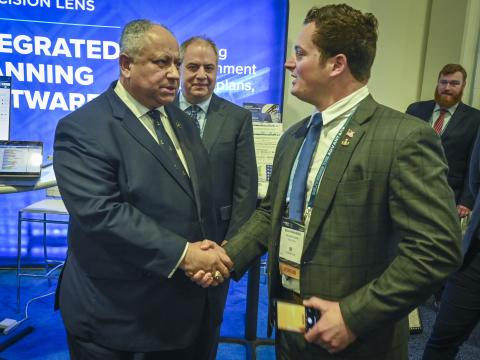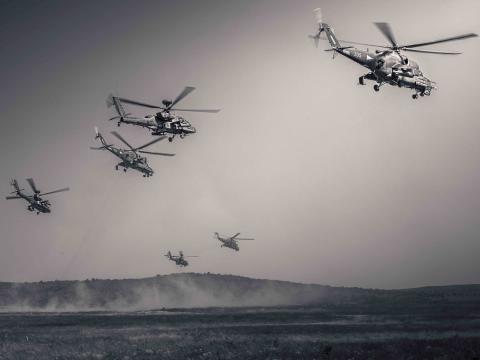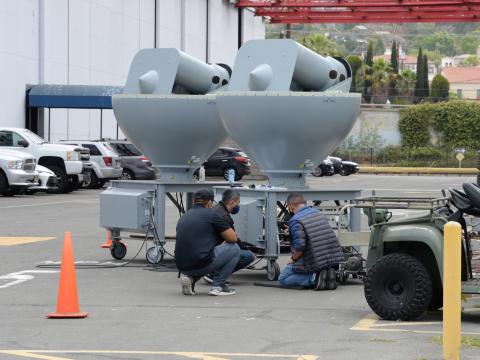Commander Touts Digital Twin Benefits
Vice Adm. William Galinis, USN, commander, Naval Sea Systems Command, indicated that digital twins are instrumental in the design of a broad array of ships, including next-generation attack submarines, destroyers and amphibious warships.
The admiral made the comments while serving on a West 2021 panel addressing innovation across the maritime services, which include the Navy, Marines and Coast Guard. In addition to Adm. Galinis, the panel included Vice Adm. Dean Peters, USN, commander, Naval Air Systems Command; Rear Adm. Douglas Small, USN, commander, Naval Information Warfare Systems Command; Brig. Gen. Arthur Pasagian, USMC, commander, Marine Corps Systems Command; and Rear Adm. Carola List, USCG, assistant commandant for engineering and logistics.
Adm. Galinis highlighted the use of digital twins when the panelists were asked to report on specific projects under their respective organizations that contribute to sea service integration. He noted that digital twins already have been used to design the Aegis weapon system and gas turbine engines and described “significant progress” in the use of digital twins. “Most recently, we’re actually building digital twins of our public shipyards, probably some of the more complex digital twin work that we’ve done up to this point, quite frankly, which is really going to help us improve the efficiencies.”
VADM William Galinis, USN, commander, Marine Corps Systems Command, touts the benefits of #DigitalTwins and says digital twins for shipyards are some of the most complicated digital twins so far.#WEST2021
— George Seffers (pronounced See furs) (@gseffers) June 30, 2021
He also reported that digital twin technology helped officials to more quickly and easily troubleshoot a gas turbine-powered ship deployed overseas. “It really did reduce the maintenance delay time it would have taken to get that engine back to full operation,” he said.
Adm. Peters cited the Battle Management Aid (BMA) 2020 in response to the integration question. The system provides a common operating picture to ships and to aircraft, such as the E2D Hawkeye. “We’ve just finished developing that. It’s relatively simple. It’s like a one-way pipe that provides information that would normally only be available on an E2 or on a carrier or on a cruiser. Now, all of those units will have the same information,” Adm. Peters said. “It’s going out with Carrier Strike Group 1.”
VADM Dean Peters, USN, commander, Naval Air Systems Command: No capability is static. It's so important to build in an upgrade plan for cybersecurity, to build in a patch plan.#WEST2021
— George Seffers (pronounced See furs) (@gseffers) June 30, 2021
Adm. Small indicated that his organization is dramatically expanding its contributions to networking and communications across all the services and the joint force. “With Project Overmatch, we’re putting that on steroids and really working deliberately and collaboratively, certainly with the Marine Corps and the Coast Guard,” he said. “If you look at the concepts for distributed maritime operations and littoral operations in a contested environment, our ability to deploy what we call an operational architecture is absolutely critical. It needs to be a seamless integration across the sea services. It’s all about amassing effects at a time and place of our choosing, whether kinetic or non-kinetic,” the admiral added.
RADM Douglas Small, USN, commander, Naval Information Warfare Systems Command: Our ability to deploy what we call an operational architecture is critical.#WEST2021
— George Seffers (pronounced See furs) (@gseffers) June 30, 2021
Gen. Pasagian listed the Navy and Marine Corps Ship Interdiction System (NMESIS) as a platform contributing to sea service integration. “The NMESIS platform is one of the primary lethal components of what is envisioned to be a task-organized unit that operates … in the littorals.”
Brig. Gen. Arthur Pasagian, USMC, commander, Marine Corps Systems Command; There is no industry that can match American industry. Full stop.#WEST2021
— George Seffers (pronounced See furs) (@gseffers) June 30, 2021
And Adm. List pointed to the Coast Guard’s cooperation with the Navy on a range of programs including counter-unmanned aerial system development, Future Vertical Lift and the Minotaur mission system architecture, which incorporates sensors; radar; and command, control, communications, computers, cyber, intelligence, surveillance and reconnaissance equipment to enable air crews to gather and process surveillance information that can then be transmitted during flight to other platforms.




